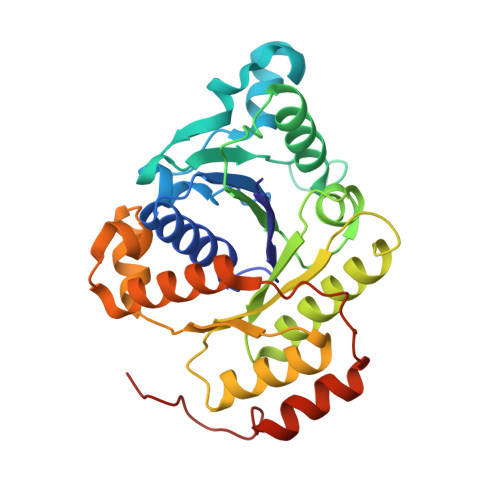Site-Specific Oxidation State Assignments of the Iron Atoms in the [4Fe:4S]2+/1+/0States of the Nitrogenase Fe-Protein.
Wenke, B.B., Spatzal, T., Rees, D.C.(2019) Angew Chem Int Ed Engl 58: 3894-3897
- PubMed: 30698901
- DOI: https://doi.org/10.1002/anie.201813966
- Primary Citation of Related Structures:
6N4J, 6N4K, 6N4L, 6N4M - PubMed Abstract:
The nitrogenase iron protein (Fe-protein) contains an unusual [4Fe:4S] iron-sulphur cluster that is stable in three oxidation states: 2+, 1+, and 0. Here, we use spatially resolved anomalous dispersion (SpReAD) refinement to determine oxidation assignments for the individual irons for each state. Additionally, we report the 1.13-Å resolution structure for the ADP bound Fe-protein, the highest resolution Fe-protein structure presently determined. In the dithionite-reduced [4Fe:4S] 1+ state, our analysis identifies a solvent exposed, delocalized Fe 2.5+ pair and a buried Fe 2+ pair. We propose that ATP binding by the Fe-protein promotes an internal redox rearrangement such that the solvent-exposed Fe pair becomes reduced, thereby facilitating electron transfer to the nitrogenase molybdenum iron-protein. In the [4Fe:4S] 0 and [4Fe:4S] 2+ states, the SpReAD analysis supports oxidation states assignments for all irons in these clusters of Fe 2+ and valence delocalized Fe 2.5+ , respectively.
Organizational Affiliation:
Division of Chemistry and Chemical Engineering, California Institute of Technology, Pasadena, CA, 91125, USA.

















